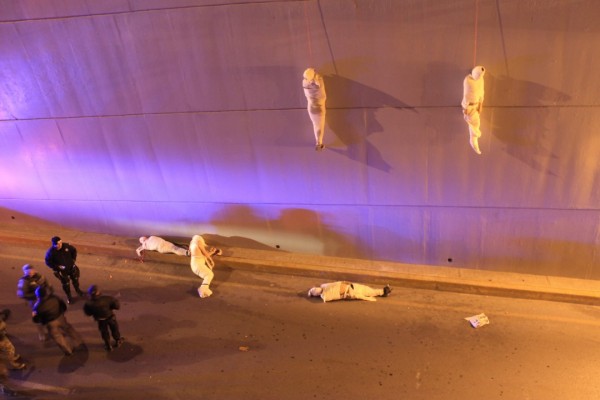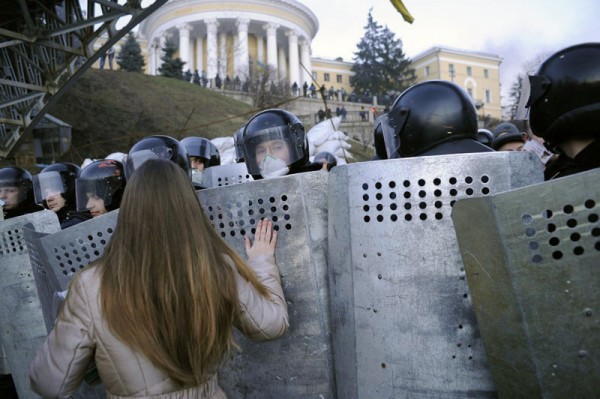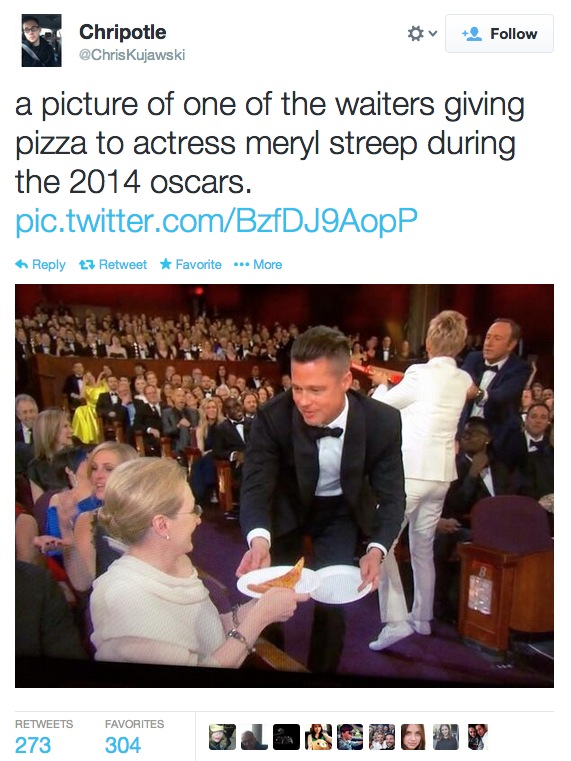Notes
Murder as Damn(ed) Good Art: Robert Hariman on Organized Crime World Press Winner
One hundred years ago Italian Futurism was one of the leading edges of modern art. (A retrospective exhibition is currently up at the Guggenheim and reviewed by the Times here.) Futurism was distinctively bold, uncannily tuned into the machine age, and violently prophetic during a period of extraordinary turbulence in art and politics. It also celebrated violence. Fortunately, few artists today would do that or be admired for dong so. But they don’t have to, as the art of violence has moved on.
This photograph by Christopher Vanegas was one of the winners in the 2014 World Press Photo Contest. It was not graced with the wealth of commentary regarding the winner, as one would expect of any contest. It deserves more attention that it has received, however, and not because we need to fiddle with the rankings in a series of outstanding images. The winner was a portrait of communication–indeed, an almost pure form of communication–and we ought to be talking about that, but the photo above is a study in both communication and violence, and we really need to be talking about that.
Ideally, communication is the opposite of violence: democratic civil societies are built on that premise. The more that you can channel conflict resolution into talking instead of beating, maiming, and killing, the better off you are. But not all regimes are democratic: for example, the organized crime organizations in Saltillo, Coahuila, Mexico. There, conflict leads to murdered bodies hanging from a bridge and dumped on the ground below. As for the state that is supposed to hold the monopoly on violence and use it to protect its citizens? We see only the concrete backdrop of bridge and highway, and police showing up too late to do anything except stand around like hapless functionaries. Between impersonal infrastructure and overpriced policing, there is a gaping hole where civil society is supposed to be. If anyone is going to be there, it is the viewer of the photograph.
The mob knew that it wasn’t enough to kill its enemies; the killings had to be displayed to the viewing public. That is the logic of terrorism: using media coverage of targeted killings to intimidate whole populations. But the photographer isn’t a lackey of the mob. Instead, the photograph supplies enough distance and artistic framing to see not only the abject bodies but also the intention and techniques of display. So it is that the photograph presents a choice. Viewers can react with horror to what has been done, or they can react with horrorand with an awareness of how they, too, have been targeted. In the first reaction, the impulse then is to pull away from any further involvement; that would be just fine with the mob, as it makes the public square a barren, empty space to be fought over by the few armed gangs and the state (which, if the citizens are quiescent enough, becomes just another armed gang). In the second reaction, however, you become committed in some small way to keeping civil society alive, committed to a solidarity with victims and all others who are being targeted.
This choice is reflected in two sources of overlapping artistry in the image. Neither involves the iconography of Futurism, but a relationship between art and violence is very much in play. First, there is the artistry of the killers. Frankly, it’s damn good. They clearly have a flair for a dramatic mise en scene, funereal allusion, and abstraction. These are no longer merely bodies, but humanity, and those who killed are not thugs but masters of more than one underworld. By artistically owning death, they acquire a dark power over life. Number them among the artists of our time, and then be prepared to watch terror become a way of life.
Fortunately, there also is the artistry of the photographer. The purple and yellow lighting throws the tableau into an aesthetic space, as if we are in an art gallery. That changes the way we see. The bodies now could be a work of art (they look very similar to a number of artworks that I have seen). That need not minimize (“aestheticize”) their deaths, but rather goad us to think about how the violence itself was staged. The positioning of the bound bodies, police, and spectators raises questions of who should be acting, who should be holding others accountable, and why inaction seems to be the order of the day. (In respect to the challenge of stopping the violence, just how many might as well be dead?) Together they ask us to think about how communication can be hijacked by those who would just as easily kill.
I’ve argued before that photojournalism is documenting the changing character of violence in our time. Vanegas may have captured something important in that regard. Once again, when violence becomes an art form, modernity is in trouble. Trouble that may be of its own making.
— Robert Hariman
(cross-posted from No Caption Needed.)
(photo: Christopher Vanegas “El Guardían” (Victims of Organized Crime)/La Vanguardia. Winner: Third Prize, Singles, Contemporary Issues, World Press Photo Contest. caption: 08 March 2013. Police arrive to a crime scene where two bodies hang from a bridge; another three are on the floor. They had been killed by organized crime in Saltillo, Coahuila, in retaliation against other criminal groups. Saltillo, Coahuila, Mexico.)



Reactions
Comments Powered by Disqus